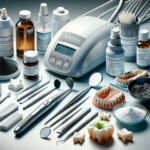Understanding Bladder Cancer
Bladder cancer is a type of cancer that begins in the cells of the bladder, the organ responsible for storing urine. It is among the most common cancers affecting the urinary tract, particularly in older adults. The disease is characterized by the growth of abnormal cells in the bladder lining, which can develop into tumors. Early detection and understanding of bladder cancer are crucial as they significantly improve the chances of successful treatment and recovery.
Several risk factors contribute to the likelihood of developing bladder cancer. These include smoking, exposure to certain industrial chemicals, chronic bladder inflammation, and a family history of the disease. Smoking, in particular, is a major risk factor, with smokers being several times more likely to develop bladder cancer compared to non-smokers.
Symptoms of bladder cancer can include blood in the urine, frequent urination, and pain during urination. However, these symptoms can also be indicative of other less serious conditions, which is why medical consultation is essential for accurate diagnosis.
Risk Factors and Prevention Strategies
Understanding the risk factors associated with bladder cancer is the first step toward prevention. As previously mentioned, smoking is a significant contributor, responsible for nearly half of all bladder cancer cases. Quitting smoking can drastically reduce the risk, offering a significant preventive measure.
Exposure to industrial chemicals, such as those used in the production of rubber, leather, textiles, and paint products, also increases the risk. Therefore, individuals working in these industries should adhere to safety protocols, including the use of protective equipment and regular health check-ups.
Preventive strategies include maintaining a healthy lifestyle, which encompasses a balanced diet rich in fruits and vegetables, regular physical activity, and adequate hydration. Consuming plenty of fluids helps to dilute potential carcinogens in the urine and flush them out of the bladder more frequently.
- Quit smoking to significantly lower risk.
- Limit exposure to industrial chemicals.
- Adopt a healthy lifestyle with a balanced diet and regular exercise.
- Stay hydrated to help flush out carcinogens.
Importance of Early Detection
Early detection of bladder cancer plays a pivotal role in the successful management and treatment of the disease. When identified at an early stage, bladder cancer is highly treatable and often curable. Regular medical check-ups and awareness of the symptoms are key components in detecting the disease early.
Screening tests, such as urine cytology and cystoscopy, can help in early detection. Urine cytology involves examining urine samples for cancerous cells, while cystoscopy allows doctors to view the inside of the bladder using a thin tube with a camera. These tests are particularly recommended for individuals at high risk, such as smokers and those with a family history of bladder cancer.
Furthermore, being vigilant about changes in urinary habits or the presence of blood in urine can prompt early medical advice and intervention. Early intervention not only improves the prognosis but also reduces the need for more aggressive treatments.
Current Treatment Options
Once bladder cancer is diagnosed, several treatment options are available depending on the stage and grade of the cancer. Treatments range from surgery, chemotherapy, radiation therapy, to immunotherapy. The choice of treatment is influenced by factors such as the size and spread of the tumor, the patient’s overall health, and personal preferences.
Surgery is often the first line of treatment, especially for tumors that are confined to the bladder. This can involve removing the tumor or, in more advanced cases, the entire bladder. Chemotherapy and radiation therapy are used to kill cancer cells and shrink tumors, often in conjunction with surgery.
Immunotherapy, a relatively newer option, involves stimulating the body’s immune system to fight cancer cells. This has shown promising results, particularly in cases where other treatments have failed. Each treatment plan is tailored to the individual, ensuring the best possible outcomes.
- Surgery for tumor removal or bladder resection.
- Chemotherapy and radiation therapy to target cancer cells.
- Immunotherapy to boost the immune system’s response.
Living with Bladder Cancer
Living with bladder cancer involves not only managing the physical aspects of the disease but also addressing the emotional and psychological impact. Support systems, including family, friends, and cancer support groups, play a crucial role in providing the necessary emotional backing.
Patients are encouraged to maintain open communication with their healthcare providers to address any concerns or side effects experienced during treatment. Regular follow-ups and monitoring are essential to detect any recurrence of the disease early.
Adopting a positive outlook and engaging in activities that bring joy and relaxation can significantly enhance the quality of life. Many patients find solace in hobbies, meditation, and mindfulness practices, which help in coping with the stresses associated with the disease.
Overall, a comprehensive approach that combines medical treatment with emotional and psychological support can lead to a fulfilling life despite the challenges posed by bladder cancer.








